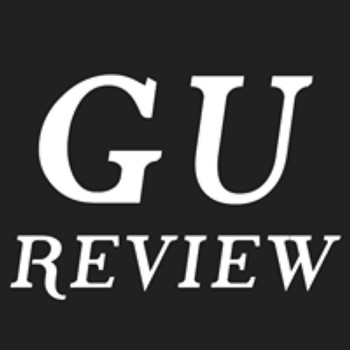Liberals get lion's share of Georgetown speaker funds
Over the last four academic years, an ostensibly non-partisan lecture fund at Georgetown University hosted nearly four times as many liberal speakers as conservative ones.
The Georgetown University Lecture Fund describes itself as a “non-partisan student run organization” focused on promoting dialogue through various campus events, but an analysis of its activities in recent years indicates that 71 percent of the speakers it has hosted have either been “liberal” or “left-leaning,” compared to just 18 percent who were “conservative” or “right-leaning.”
The Georgetown Review compiled a list of all Lecture Fund speakers between October 1, 2013 and March 15, 2017 and classified each political speaker on a continuum from liberal to conservative. Speakers who had not publicly expressed strong political stances were excluded from the analysis.
[RELATED: Liberals outnumber conservative graduation speakers 4-to-1]
The data shows that liberal speakers were vastly overrepresented compared to moderate and conservative guests. In fact, liberal and left-leaning speakers accounted for approximately 70% of political speakers hosted by the Lecture Fund during this period. Moderate conservatives were the least represented group among the categorization of political speakers, with only one recorded in the data.
Georgetown has historically hosted many of Washington, DC’s most prominent government officials and elected representatives, each of whom has used the university’s platform to influence conversations on the nation’s most critical policy questions. The ideological distribution of speakers who have worked in government as elected officials reflects the overall trend represented in the distribution of events.

The ideological distribution of general political figures—including activists, political commentators, journalists and other figures—shows a similar distribution.

In both cases, liberal speakers significantly outnumber moderate and conservative speakers. The ideological divide is slightly less pronounced in these groups, especially among elected officials. However, liberal and left-leaning speakers still represent a majority of the speakers hosted by the Lecture Fund.
To confirm a consistent trend, the Review examined the possibility that a single outlying year could have skewed the total number of speakers during the four-year period, but found that the trend lines of speakers by ideology suggest otherwise.

The graph shows that the preponderance of liberal speakers has been relatively consistent across the period, albeit with a temporary drop in 2015 that may have been caused in part by an abnormally large number of liberal speakers the year before.
In each of the first three academic years that were studies, the number of liberal and left-leaning speakers has been at least double the number of conservative and right-leaning speakers, no more than four of whom have been hosted on campus in any given year.
The data is incomplete for 2017 as it comprises only the first 3 months of the year, but the results so far indicate a possible continuation of this trend.
[RELATED: Dems dominate commencements despite defeat at polls]
To be clear, the Lecture Fund has hosted many popular apolitical speakers during this time as well. In fact, apolitical speakers represent a plurality of all speakers hosted by the group from 2013-2017, slightly edging out liberal speakers.
There are several possible explanations for the drastic difference in the number of liberal and conservative speakers, the first of which is that the Lecture Fund’s choices could simply reflect the political views of the student body at large, which tends to identify as more liberal than conservative.
Conservative speakers can also be highly controversial on college campuses today, as evidenced by the student protests against Christina Hoff Sommers when she spoke on campus in 2015 at the invitation of the GU College Republicans, and it is also possible that the Lecture Fund has sought to avoid provoking a similar level of controversy with its events.
[RELATED: Safe spaces a ‘recipe for fanaticism,’ Hoff Sommers claims]
Finally, the period represented in the data coincides with a Democratic administration in the White House, meaning more liberals occupied high-profile government jobs at the time.
Whatever the exact reason, the data is clear: Lecture Fund guests—both in and out of government—have been overwhelmingly liberal.
As a new Republican administration and Congress come to power in Washington, D.C., the Lecture Fund has perhaps the clearest opportunity in nearly a decade to expand the political breadth of its invited and sponsored guests.
The Georgetown Review reached out to representatives of the Lecture Fund for comment, but did not receive a response in time for publication.
This article was originally published in The Georgetown Review, a conservative student newspaper affiliated with the Leadership Institute's Campus Leadership Program. Its articles are republished here with permission.
Follow The Georgetown Review on Twitter: @thegureview

